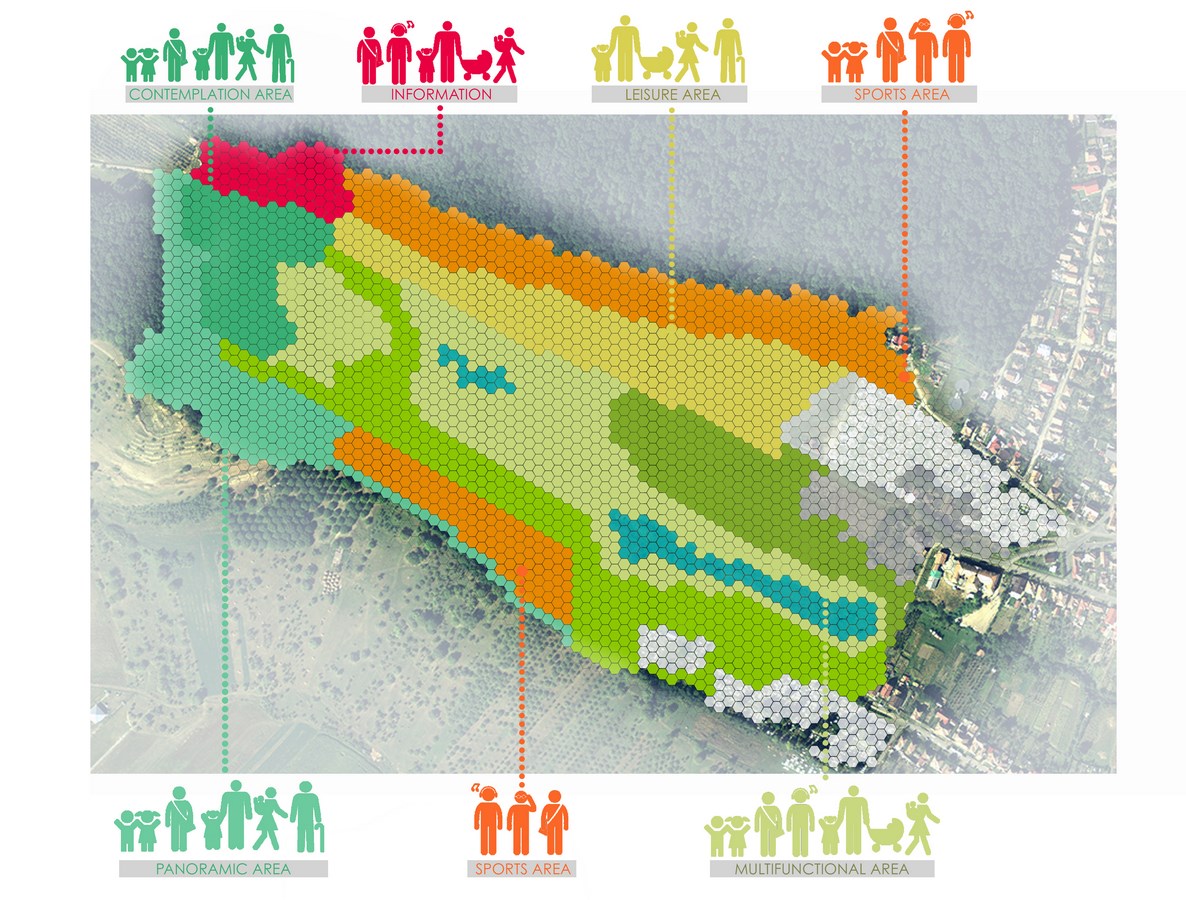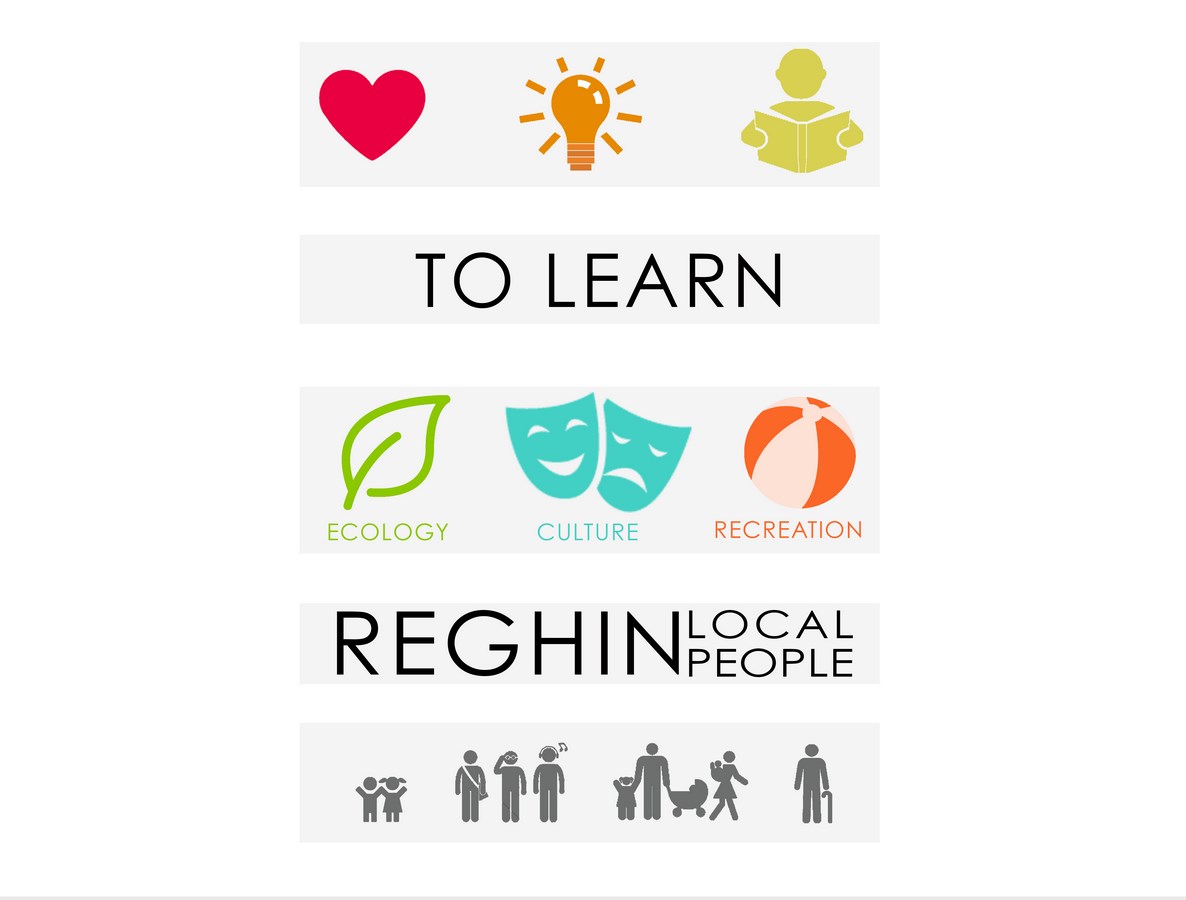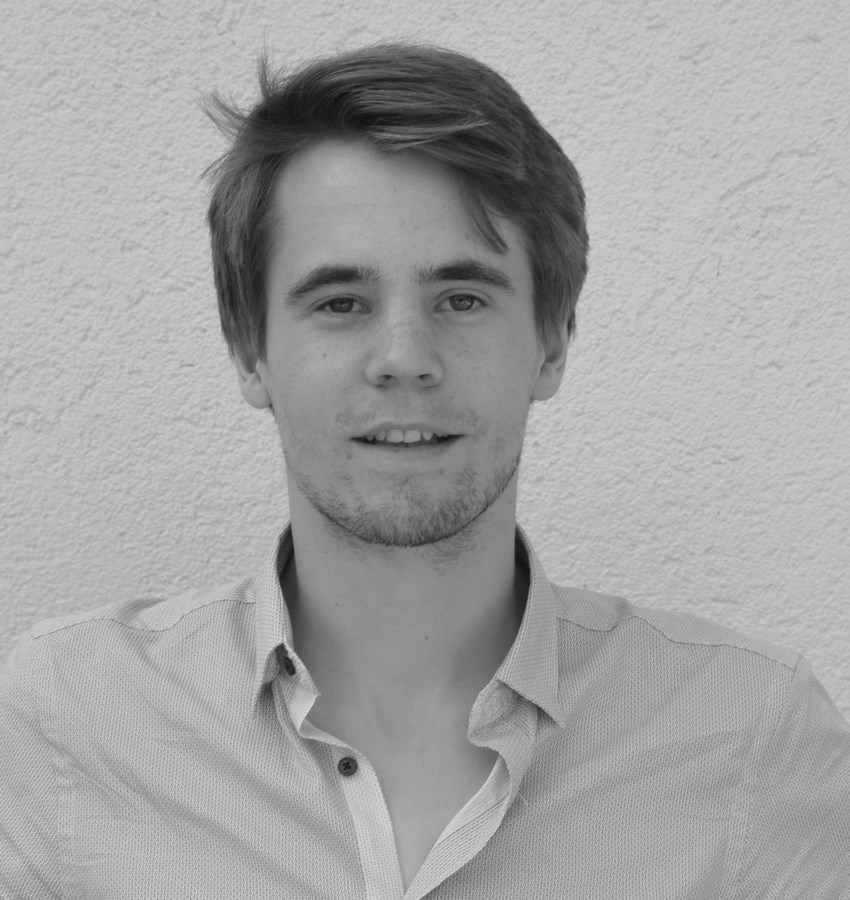Looking at a Google image of Reghin a striking kind of “park” can be seen at the north west edge of town – in extension of the hospital road, adjacent to two cemeteries and the “Round Forest”: “Parc Nou” names an empty piece of land, about five hectares large – a park which still consist of an undersigned large open space next to the urban area. Locals use it to walk their dogs, ride off road motorbikes and especially for holding parties and lighting campfires. A park yet to be developed and put in place, a real challenge for landscape architects…
Architects: Iwein Mertens, Luisa Maria Colorado, Nathan Rodrigues de Almeida, Julia Samico
Status: Concept

We formed a team with two more students from the Corvinus University; Julia Samico and Nathan de Almeida. We organized together with Prof. Dr. Markus Reinke (Weihenstephan-Triesdorf University of Applied Sciences) a vegetation habitat tour and started mapping the different kinds of vegetation types in the project area.
Another part of our environmental analysis was to look at the bird species on site.This was a slightly difficult aspect of the analysis, while nobody of our project team had experience with birds. We asked Prof. Dr. Frieder Luz Reinke (Weihenstephan-Triesdorf University of Applied Sciences) to accompany us in the early morning on a bird sound tour.
Which was abruptly ended at the Beeeater colony, some local honey producers were stuffing the holes of the colony which whatever they could find.

In order to approach to our concept we define 3 different areas, in which the focus might be, for instance: Social, Spatial, EnvironmentThe three areas contain subareas that after the analysis, were selected as vital parts of the project:
THE SOCIAL AREA contains the cultural and education subareas, this last ones cover the costumes of the community, participation and volunteer activities that are develop nowadays, also awareness from the people of the area to the New Park and the opportunities that it can offer to them.

THE SPATIAL AREA is focused in the current physical situation of the PARK which means the connections, access and circulation. The proximity to the city, the landscape, the present main and side accesses and the different kind of circulations, are part of the spatial approach.
THE ENVIRONMENT AREA the vegetation and the biodiversity were the main aims to study; the big diversity founded in the PARK led us to focus on what the landscape allowed us to learn
Taking into account the challenges and the opportunities that we had in our project, a statement made from the Senegalese forestry engineer Baba Dioum, used in New Delhi in 1968, at the triennial meeting of the General Assembly of the International Union for the Conservation of the Nature and Natural resources (IUCN) was chosen:
“In the end we will conserve only what we love, we will love only what we understand and we will understand only what we are taught”
Based on love, understanding and teaching we want the local community to learn, appreciate and take care of the treasure that they already have: the rich ecology, the culture and the history through the recreation. This design is developed for the people of Reghin, for the local people that visit the place nowadays and the new visitors that will enjoy the park in the future.
The design respects the natural flow of the park, with a balanced mix between ecological and activity areas. It will be fully cut off for cars, and protects the Bee-eater colony with specific habitat improvement measurements.
As approach to the park we also implemented EDUCATIONAL STRATEGIES, these strategies are divided in two groups:
- Architecture structures: These structures are the physical way in which the people are going to learn, enjoy and experience the park.
Simple and easy to build architectural structures were designed to create clear, readable and homogeneous constructions for the park. The design of these structures is based on the patterns that the trees have in their branches. The material of the structures is ideally wood, which is the raw material from the region. The structures have to be strong anchored into the ground to avoid future vandalism.
- Social Activities: These activities are the immaterial way in which the people are going to understand and appreciate the meaning of the fauna and flora in the park. In order to improve the knowledge of the Reghin population about the biodiversity of New Park and its relevance, we decided to create HANDS-ON ACTIVITIES that could bring people together and involve them in the project.

Iwein Mertens:
Iwein Mertens (1992, Belgium) received the Master of Engineering in International Landscape Architecture from Hochschule Weihenstephan – Triesdorf in 2015, and graduated as a landscape architect in 2013 at the University of Ghent.
Iwein worked as Intern with the city departments of Physical Planning in Ghent and Amsterdam, participated in different landscape architecture workshops in Germany, Romania and Tunisia. In July 2015, he got published in World Landscape Architecture Magazine WLA20 along Karres en Brands, Sasaki Associates and received the Förderpreis der Herbert-Heise-Stiftung in recognition of outstanding achievements in the study program.
After his MEng, he travelled for 1 year through New Zealand where he improved his cultural and social knowledge of the world. From April 2017 he started working as a Junior Landscape Architect for OMGEVING.

Luisa Colorado:
Luisa Maria Colorado (1987, Colombia) received a Master of Engineering in International Landscape Architecture from Hochschule Weihenstephan – Triesdorf in 2015, and graduated as architect in 2011 at the “Universidad Nacional de Colombia” in Bogotá.
During her studies and due to her interest in international Architecture, Luisa studied one year at the “Universidad politécnica de Madrid” in Spain. After her degree in Architecture, she studied and worked one year in London where she had the opportunity to be in contact with different cultures and improve her language skills.
Since 2013 she has been leaving in Germany. She worked 2 years in an Architecture office in Munich and in 2017 she started working as planning consultant in RBSGROUP an international Workplace Consulting company with offices in Germany, Switzerland and Italy.

Nathan Rodrigues de Almeida:
Architecture and Urban Planning undergraduate student at Federal University of Tocantins, Brazil (Final bachelor degree on 2018/2). Sandwich degree student at Corvinus University of Budapest, Faculty of Landscape Architecture (2014-2015) – Science without Borders program / CAPES scholarship. Area of interests: Photography, Urban planning, Landscape design, Urban and landscape conservation and Socio-spatial integration.

Julia Samico:
Architecture and Urban Planning graduate student at Federal University of Pernambuco, Brazil (Final bachelor degree on 2018/2). Sandwich degree student at Corvinus University of Budapest, Faculty of Landscape Architecture (2014-2015) – Science without Borders program / CAPES scholarship. Areas of interest: Urban planning, urban design, Landscape design, Urban and landscape conservation and Social housing.






